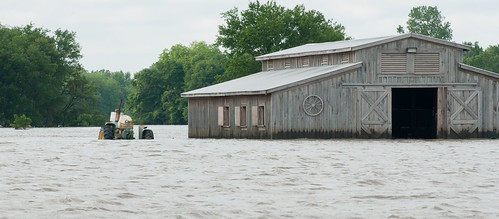
The Third National Climate Assessment Release (NCA) report was released today. The report was written by 240 authors who worked in author teams reflecting their expertise, who also selected additional contributing authors, including several scientists and experts from USDA.
The report is similar in many respects to previous climate assessments. The authors conclude that climate change is already happening across the United States. The report documents ways climate change is altering agriculture and forestry systems across the country and evaluates how these systems are likely to be affected in the future.
The authors found that climate disruptions to agricultural production have increased in the past forty years and are projected to increase over the next twenty five years. By mid-century and beyond, these impacts will be increasingly negative on most crops and livestock.
Many agricultural regions will experience declines in crop and livestock production from increased stress due to weeds, diseases, insect pests, and other climate change induced stresses. Current loss and degradation of critical agricultural soil and water assets due to increasing extremes in precipitation will continue to challenge both rain-fed and irrigated agriculture unless innovative conservation methods are implemented.
Agriculture has been able to adapt to recent changes in climate; however, increased innovation will be needed to ensure the rate of adaptation of agriculture and the associated socioeconomic system can keep pace with climate change over the next twenty five years.
Climate change is increasing the vulnerability of many forests to ecosystem changes and tree mortality through fire, insect infestations, drought, and disease outbreaks. Forests are an important carbon sink. U.S. forests and associated wood products currently absorb and store the equivalent of about sixteen percent of all carbon dioxide (CO2) emitted by fossil fuel burning in the U.S. each year. Climate change, combined with current societal trends in land use and forest management, is projected to reduce this rate of forest CO2 uptake. Bioenergy could emerge as a new market for wood and could aid in the restoration of forests killed by drought, insects, and fire. Forest management responses to climate change will be influenced by the changing nature of private forestland ownership, globalization of forestry markets, emerging markets for bioenergy, as well as U.S. climate change policy.
Unlike previous assessments, this report goes into much more detail on how climate change is affecting people. For the first time, it looks the impacts on cities and their infrastructure, on coastal areas, and on rural communities. I had the opportunity to coordinate the production of the Rural Communities chapter of the report. We found that rural communities are highly dependent upon natural resources for livelihoods, economic development, and social structures. Climate change will progressively increase over this century and will alter economic activities that rural communities depend on such as agriculture, forestry, and recreation. Rural communities are tremendously resilient but will face particular obstacles in responding to and preparing for climate change risks.
The report was conducted under the auspices of the U.S. Global Change Research Program (USGCRP), required by the Global Change Research Act (GCRA) of 1990. The GCRA mandates a report to the President and the Congress that evaluates, integrates and interprets the findings of the $2.6 billion Federal research program on global change every 4 years.
The full report, which went through several rounds of federal advisory committee, agency, and public review, as well as independent review by a panel of the National Academies, can be found at: www.globalchange.gov.
